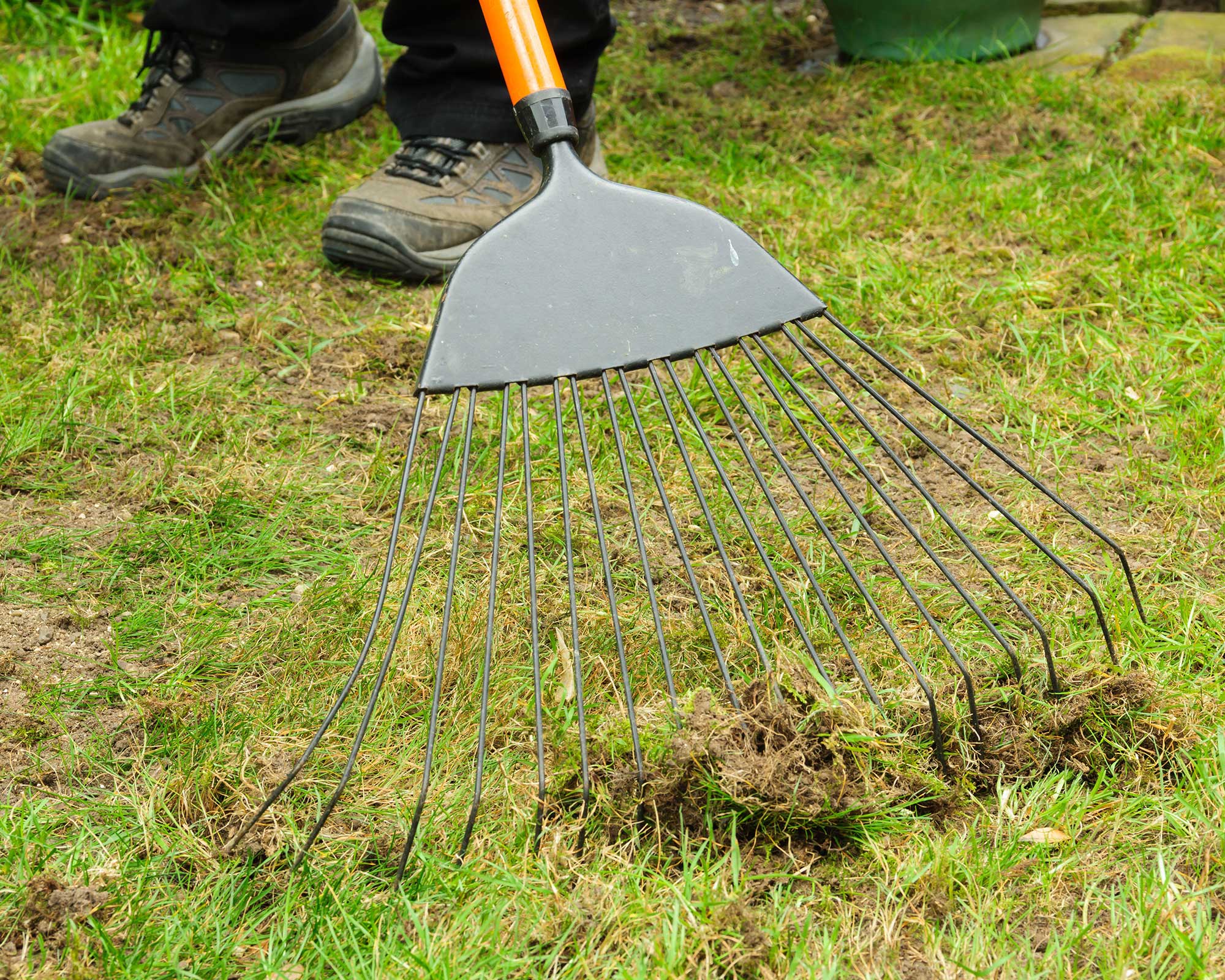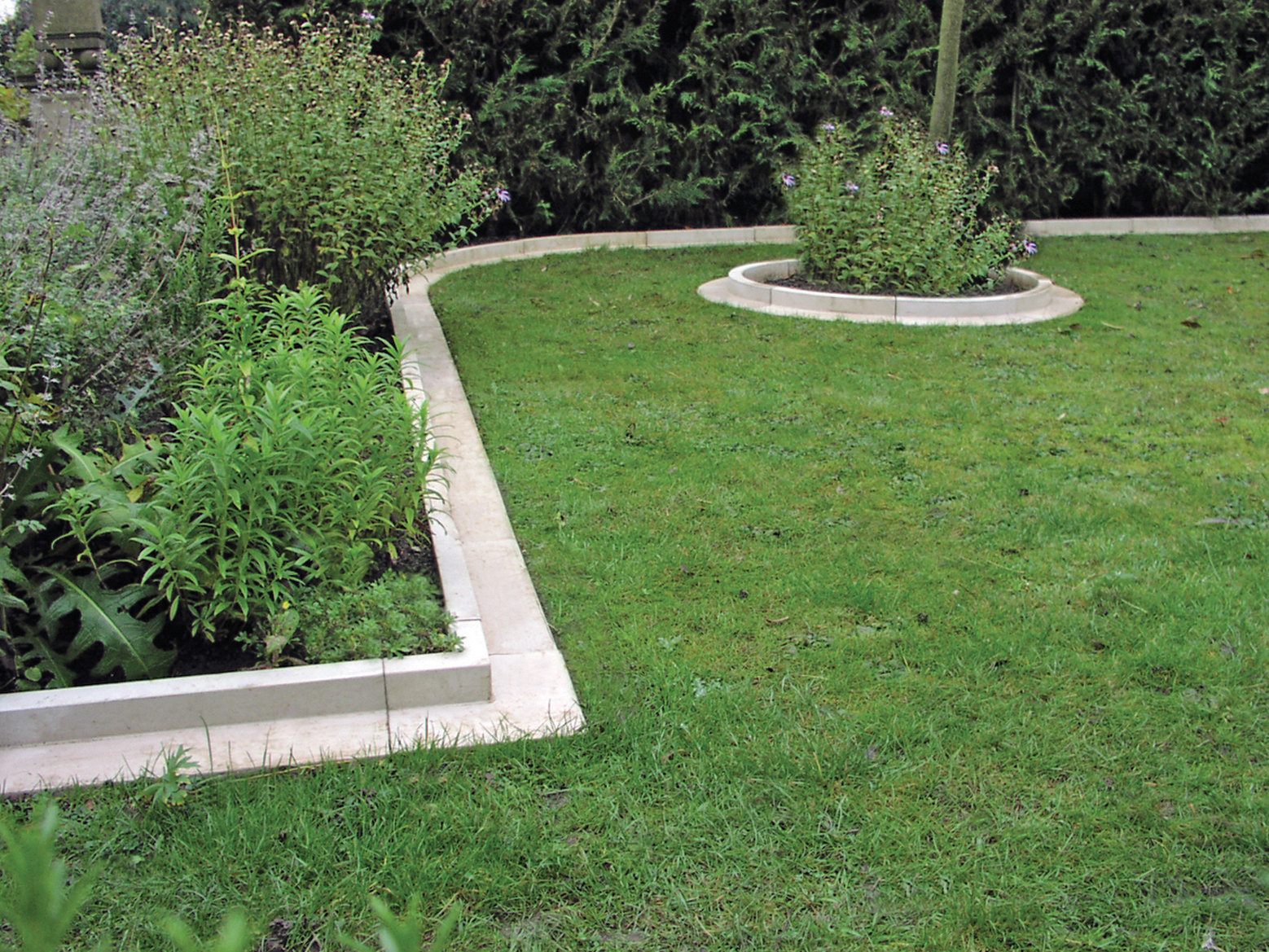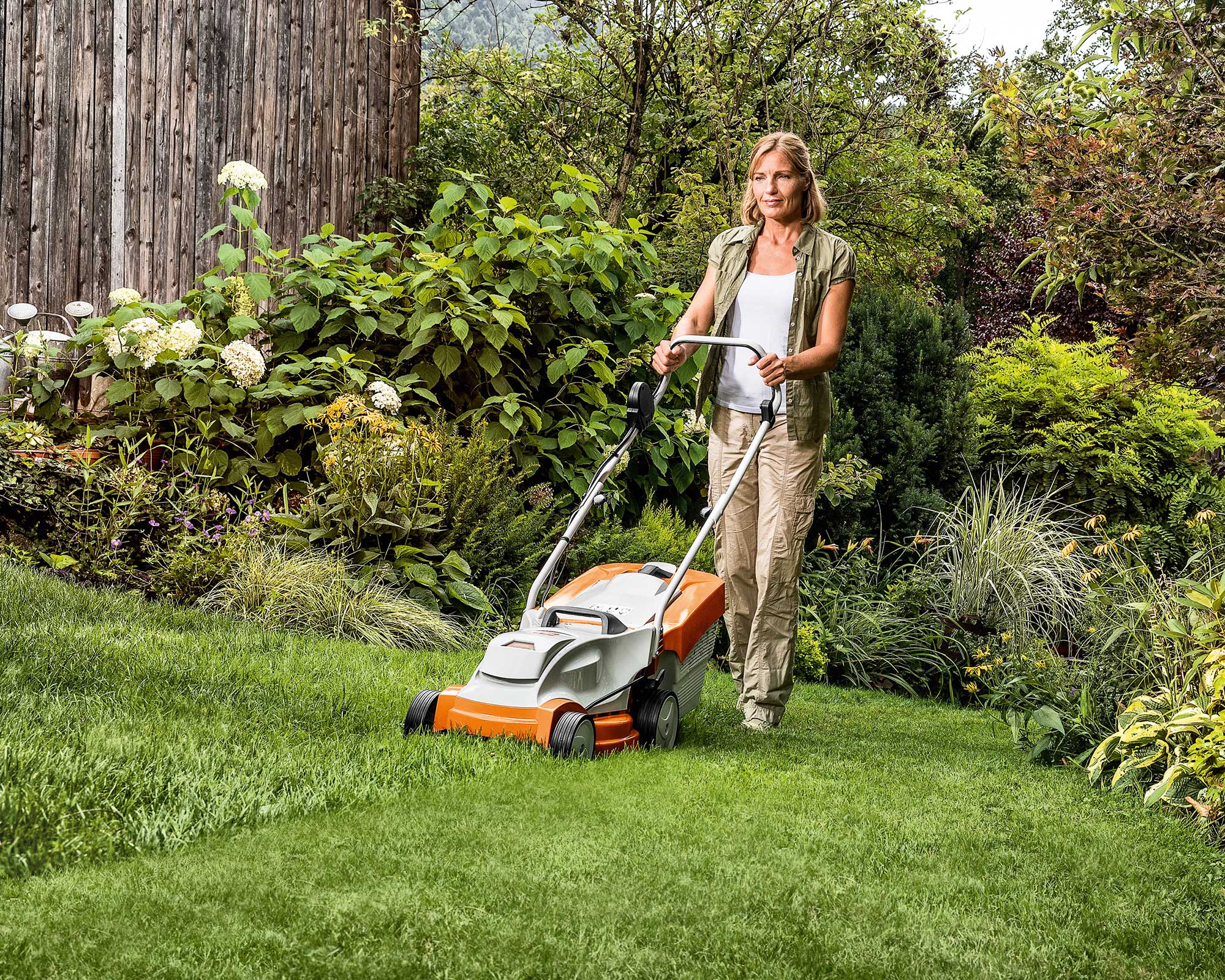Autumn lawn care tips: how to get yours looking its best this season
Need some autumn lawn care advice to revitalize your grass for the months ahead? Our guide has you covered


On the hunt for autumn lawn care tips? You've come to the right place. Chances are your lawn is probably in need of some TLC after the long, hot summer – and autumn is the best time to revitalize it. With a bit of know-how, it's easy to give it a boost ahead of the winter months.
Using lawn edging ideas goes a long way in smartening up your patch of turf, but there are some tasks to be getting on with to ensure the grass itself stays in tip-top condition. This season is a good time to repair any bare patches by reseeding or returfing, remove any build-up of moss and dead grass (known as scarification), and improve drainage by spiking the lawn with a fork (known as aeration) then top dressing it with a sandy topsoil mix.
You can also feed the lawn with a fertilizer designed especially for autumn. There are a few pests you'll want to look out for too. And, you'll be gearing up towards that final mow, before your lawn mower retires to the shed for winter. Our guide explains all the advice you need to know.
Autumn lawn care tips: 6 simple steps for keeping yours healthy
Follow the autumn lawn care tips below and your grass will soon be in top shape. It's easier than you might think.
1. Repair any bare patches
First on the list for autumn lawn care jobs is to look for any 'bald' patches in the grass – a common problem after excessive use or a dry summer. If you spot some, don't worry – it's easy to sort out.
Loosen the soil with a fork and fill the area with a scoop of potting compost. Then thickly sprinkle over a grass seed mix. Be sure to choose the right one as there's a huge range available, including mixes for shady lawns, as well as hard-wearing and drought-tolerant blends. Water well and protect the area from birds and pets with a piece of chicken wire.
If a bigger area needs replacing, you can use fresh turf from the garden center, but remember to lay it quickly so it doesn't have a chance to dry out. You will need to cut out a square or rectangle for each area that needs attention and level the soil to fit the depth of your new turf. Ease each section in and firm down so there are no gaps, then water it in well.
'The relative warmth and dampness of October and early November are ideal for sowing and turfing a lawn, but September is often still too dry, unless you have the time and patience for regular watering,' advises Ruth Hayes, gardening editor of Amateur Gardening. You can find more info on how to repair lawn patches in our guide.

2. Scarify your lawn
The build-up of moss and dead grass that accumulates on a lawn is known as thatch. As part of your autumn lawn care routine, you can remove it by raking the surface. This will let in more light, and improve air circulation and drainage.
Want something more heavy-duty? Scarifiers are good as they have rotating blades that lift out the thatch to save you the job. They often have an aerator attachment too, that makes small holes in the ground for better air circulation and water and nutrient absorption.
You can find more expert tips on how to scarify a lawn in our in-depth feature.

3. Add an autumn lawn fertilizer
From October to mid-March, the aim is to keep the lawn in good condition but not encourage it to grow. So one important thing not to do in autumn is feed your lawn with nitrogen-rich food, as explains Ruth of Amateur Gardening. Nitrogen will provoke excessive new growth that will be vulnerable when the colder weather comes.
'Instead, use a specific autumn lawn feed to strengthen the grass,' she says. What's more, many have moss killer incorporated into them, which strips out the grass’ main competitor for light, air and nutrients.
Water the feed in well so it gets to the roots where it's most needed, or even better, schedule this for a day when rain is forecast later on. If you want to up your yard's eco-friendly credentials, look for pet- and wildlife-safe products that are suitable for organic gardening.

4. Aerate and top dress it
The surface of a lawn is often hard and compact by the end of summer, which means that rainwater can't soak in. This can lead to waterlogging, especially when the winter weather hits, and isn't good for your grass. The solution: learn how to aerate a lawn.
To do so, drive in a garden fork 4in (10cm) deep at regular intervals (4in/10cm or so apart) all over the lawn, gently rocking it as you do so to loosen things up and get air to the roots.
To help drainage further and keep your lawn healthy, scatter over a top dressing that is a mix of sharp sand, compost and topsoil (you can buy these ready mixed from garden centers) to fill the holes. Then, sweep over with a brush to keep things looking spick and span.

5. Keep on top of fallen leaves
As deciduous trees drop their leaves, it's important to keep on top of removing them from your lawn. Leaving them can result in a proliferation of damaging pests, plus mould and lichen build-up that can become a real problem. One of our best garden rakes will come in handy for the job, or for quicker results, opt for a leaf blower.
Rather than letting the leaves go to waste, why not learn how to make leaf mould and create a rich mulch for your garden borders instead?

6. Neaten up the edges
Are the borders of your lawn looking a little frayed? Edging them with a half-moon cutter or digging a ditch and piling the soil on a nearby flowerbed immediately creates definition and neatness throughout the garden. It's an easy addition to your autumn lawn care to-do list, and is super satisfying.
Go a step further by installing some new garden edging to really give your yard a lift.
- Looking for more ways to pep up your backyard? Our lawn decoration ideas are full of creative solutions.

What lawn pests should you watch out for in autumn?
In autumn, moles may still be active, and can be deterred with repellent granules which are widely available. Molehill soil can be added to your borders.
Watch out for chafer grubs too. These 'are the larvae of chafer beetles and are mainly active between September and April,' says Ruth of Amateur Gardening. 'They eat grass roots, causing yellow, dying patches. Matters aren't helped by birds pecking at the lawn to get to the grubs.
'Treat with a parasitic nematode when conditions are warm, and maintain good lawn care to reduce pest numbers.'
And if you spot worm casts on your lawn, don't despair. 'They are unsightly rather than a major problem, though they can encourage moss and weeds to take hold,' says Ruth. 'Wait until they are dry, then brush them off with a broom or sweep the upturned head of a rake across them to disperse them into the soil.'
If your lawn intruders are of the plant variety, then our guide on how to get rid of lawn weeds is definitely worth a look.

When should you stop mowing your lawn before winter?
In summer, you might need to mow your lawn as much as twice a week to keep it in check. However, in fall this can drop down to once a week for conventional lawns, as advises the RHS. Your last 'regular' cut will generally be around late October to November – it depends on when the weather gets cold enough for the grass to stop growing.
After this, a lawn generally won't need mowing at all until spring – around March. If you do give it a winter mow, keep it on a high setting, and don't do it in frosty or wet conditions which can damage the grass.
If you need an upgrade for the job, our guide to the best lawn mowers will come in handy.

Lifestyle journalist Sarah Wilson has been writing about gardens since 2015. She's written for Gardeningetc.com, Livingetc, Homes & Gardens, Easy Gardens and Modern Gardens magazines. Having studied introductory garden and landscape design, she is currently putting the skills learned to good use in her own space where the dream is establishing a cutting garden.
